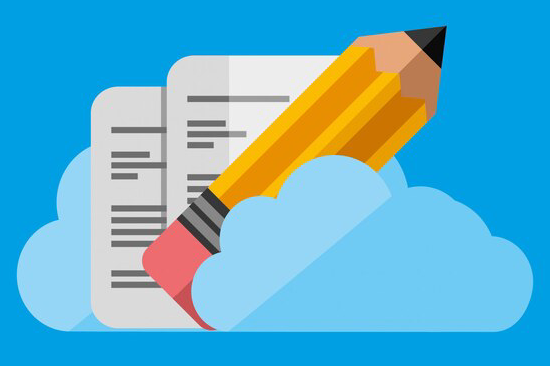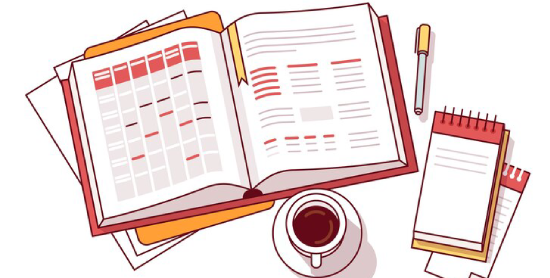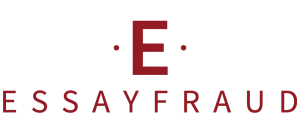Study Standard Essay formats: MLA, APA, Chicago Styles
The MLA format is the most commonly used format for writing essays in high school. It has clear rules about how titles, citations and sources should be displayed. This format also requires the use of certain punctuation marks and style. The MLA format also requires the use of parentheses after each quote. The APA format is the more commonly used format in colleges. It has several requirements that differ from the MLA format, including the use of different font styles and punctuation. The APA format also requires the use of page numbers and references at the end of your paper. The Chicago format is another frequently used format in colleges.

It has several requirements that differ from the MLA and APA formats, including the use of different font and punctuation styles and its own page numbering and references. The Chicago format also requires users to add footnotes to each source of information cited or mentioned in their paper. In conclusion, these three essay formats are very important for students to learn before starting to write their own essays. They all have unique requirements for how information should be displayed, so it’s important that students thoroughly study all three of these formats before starting to write their own essays. In this way, students will be better prepared to pass academic assignments successfully!
What is essay format: structure
The essay format is a structured approach to writing that allows you to express your thoughts and arguments clearly. Usually, an essay consists of three main parts: an introduction, a body, and a conclusion. The purpose of the introduction is to attract the reader’s attention and formulate a thesis. The body reveals the topic, details and arguments, supporting them with specific examples. The conclusion summarizes and emphasizes the main ideas.
The key feature of an essay is logical sequence and clarity of expression. The text should have an internal logic, where each paragraph flows into the next, maintaining the unity and consistency of the argument. It is also important to follow sentence structure and grammar rules.
When writing an essay, it should be remembered that it should impress not only with its content, but also with the form of presentation. Short but rich sentences, excellent choice of words and a balanced style help to achieve the integrity and effectiveness of the text. Such a format not only makes it easier to understand the idea, but also makes reading interesting and exciting.
Need help WRITING RESUMES?
Just submit your requirements and choose a resume writer. That’s all we need to write a winning resume for you.
How to write an essay in MLA format
1. Choose a topic for your essay. Make sure that your topic is something you can write about with enough information and content to complete the essay. 2. Create an outline or framework for your essay. This will help you organize the ideas and facts that you will use in your essay. 3. Use the right resources to get information about your topic. Make sure that the resources you use are accurate, reliable, and relevant to your topic. 4. Write the body of the essay based on the outline or framework that you previously created. Make sure that each paragraph has one main idea and some supporting examples to reinforce the main idea. Also make sure that each paragraph is connected to each other logically and naturally. 5. Write a conclusion to close your essay well and draw the reader’s attention back to the main idea of the essay. 6. Format the essay according to MLA (Modern Language Association) standards. This includes the use of a 12-point Times New Roman font, 1-inch margins around text, indenting the first line of each paragraph 1/2 inch, and the use of single quotation marks (‘) when quoting directly from a specific source or when making reference to someone else’s ideas or idea . 7. Double-check your essay to ensure that there are no spelling, grammatical, or other grammatical errors that may have occurred while writing it.
MLA vs. APA

The APA Essay Format is the format used for writing academic essays. It was developed by the American Psychological Association (APA) and is commonly used in the social sciences, psychology, and education. This format has strict rules about how titles, citations, and sources should be written. The MLA format is the format used for writing academic essays. It was developed by the Modern Language Association (MLA) and is commonly used in the fields of literature, arts and culture. This format also has strict rules about how titles, citations, and sources should be written. The two formats have several things in common: both provide strict rules about how to write headings, citations, and sources; both are used to write academic essays; and both are developed by professional organizations namely APA and MLA. However, there are several differences between the two formats: APA is used more often in the social sciences, psychology, and education, whereas MLA is used more often in the fields of literature, arts, and culture.
How to write an essay in APA format
Writing an essay in APA format requires the writer to follow specific rules. First of all, you should define a topic and formulate a thesis. The title should be clear and precise. First, an introduction is made, where the topic and importance of the problem are indicated.
The main part is divided into sections and subsections, supported by scientific sources in the reference apparatus. Each paragraph deals with one aspect of the topic. At the same time, it is important to use only up-to-date sources and indicate the authors and the year of publication.
Correct formatting is an important element. The text is presented in Times New Roman font size 12, with a spacing of 1.5. Margins should be the same – 2.54 cm. All pages are numbered and headings are arranged according to the APA heading rule.
The last part is conclusions and recommendations. They should summarize the main ideas and provide possible ways to solve the problem.
At the end, you should create a list of used sources, arranged alphabetically. Each entry should appear according to APA standards.
It is important to follow all the rules of APA format in order to create a research-based and logical essay.
Tips for Writing Academic Papers
1. Topic Selection: First of all, you have to decide on a topic to write about. This can be any subject that you are passionate about, but be sure to choose a topic that is relevant to the particular task or goal. 2. Research: After choosing a topic, the next step is to do research. This includes finding relevant and credible sources of information to support your argument. Be sure to note down these sources so you can refer back to them when writing your paper. 3. Outline: After doing research, the next step is to outline or outline your paper. This will give you an overview of how your paper will look when finished and also help you better plan content. 4. Body Writing: Once the outline is ready, the next step is to write the body of the paper itself. Start with a brief introduction to the topic and its purpose, then proceed with the main and supporting arguments according to the outline that was made before. Don’t forget to include quotes from selected sources to support your main argument here too! 5. Conclusion: After the body of the paper is ready, the next step is to write the conclusion. Here, write a brief summary of what has been conveyed in the body of the paper and how it contributes to the findings or final results that the author of the paper intends to convey. 6. References: Last but not least is the references or list of references in which All sources of information used in the paper must be fully and accurately stated.
If you’re writing about history, look up important dates, events that happened, and characters who played a role. If you’re writing about science, look up the generally accepted theories and the evidence to support them. If you’re writing about popular culture, find out how it started and how it has developed over the years. The more information you have, the easier it will be to make your writing more rich and informative.
Also, be sure to ask the right questions. Good questions will help you gather relevant and useful information. Don’t hesitate to ask questions about things you don’t know or can’t easily answer. This will help you get a broader picture of the subject and make your research more comprehensive.
Double-check any mistakes you may have made earlier. If you use a reference, be sure to double check that you cited the source correctly. Also, be sure to carefully re-read your last draft and be careful about correcting mistakes. If any part is unclear or doesn’t make sense, try to find out why and fix it. Feel free to ask other people about your essay if you feel the need. This will help you see the essay from the other person’s point of view and provide useful new perspectives.
